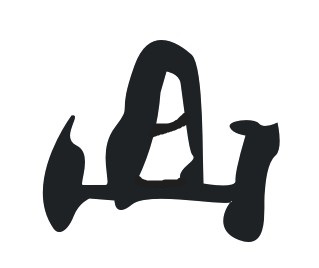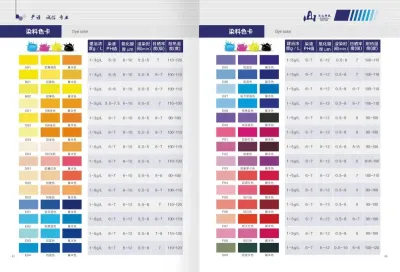
What chemical additives are used for etching aluminum?
2024-07-17 15:30
In the manufacturing process of aluminum products, the etching process is an important technical means. Through the use of chemical additives, the morphology and characteristics of the aluminum surface can be precisely controlled.
This article will explore in depth the chemical additives commonly used in etching aluminum and their working principles, analyze the scientific mysteries behind this, and interview a number of industry experts to bring comprehensive industry insights.

What is the etching process of aluminum?
The etching process of aluminum is to corrode the surface of aluminum through chemical solutions to form a specific pattern, texture or structure. This process is widely used in the manufacture of products such as aluminum foil and aluminum plates, especially in the manufacture of circuit boards for electronic devices and the surface treatment of building decoration materials.
Commonly used chemical additives for etching aluminum
In the etching process of aluminum, chemical additives play a vital role. Commonly used chemical additives for etching aluminum are: hydrofluoric acid (HF), nitric acid (HNO3), phosphoric acid (H3PO4), sulfuric acid (H2SO4), ferric chloride (FeCl3).
1. Hydrofluoric acid (HF): Hydrofluoric acid is one of the most commonly used chemicals for etching aluminum. It can effectively dissolve aluminum and its oxides to form a clean and fine etching surface. However, hydrofluoric acid is highly corrosive and toxic, requiring strict safety operating measures.
2. Nitric acid (HNO3): Nitric acid is often used in combination with hydrofluoric acid, mainly to remove the oxide layer and other impurities on the aluminum surface, further improving the etching effect. Nitric acid can provide an oxidant during the etching process to promote the dissolution of aluminum.
3. Phosphoric acid (H3PO4): Phosphoric acid is a relatively mild etchant, often used for delicate and uniform etching needs. It does not produce violent reactions during the etching process and is suitable for some aluminum products with high surface quality requirements.
4. Sulfuric acid (H2SO4): Sulfuric acid is often used in combination with other acids when etching aluminum to enhance the etching effect. It has strong oxidizing and acidic properties and can effectively remove oxides and impurities on the aluminum surface.
5. Ferric chloride (FeCl3): Ferric chloride is an etchant widely used in the electronics industry, mainly used in the manufacture of printed circuit boards (PCBs). It can accurately control the etching speed and depth to ensure the fineness and accuracy of the circuit pattern.

What is the working principle of chemical additives?
Chemical additives for etching aluminum dissolve the surface of aluminum through chemical reactions to form the desired pattern or structure. The specific working principle is as follows:
1. Dissolving aluminum and its oxides: The acidic substances in the chemical additives can react with aluminum and its surface oxides to generate soluble products, thereby removing the oxide layer and impurities on the aluminum surface. For example, hydrofluoric acid reacts with aluminum oxide to generate soluble aluminum fluoride and water:
Al2O3+6HF→2AlF3+3H2O
2. Controlling the etching speed and depth: Different chemical additives have different corrosion capabilities and reaction speeds. By adjusting the concentration and combination of additives, the etching speed and depth can be precisely controlled. For example, ferric chloride can precisely control the etching speed during the etching process to ensure the fineness and accuracy of the circuit pattern.
3. Providing oxidants: Oxidizing additives such as nitric acid and sulfuric acid can provide oxidants during the etching process, promote the dissolution of aluminum, and enhance the etching effect. For example, the nitrogen oxide gas generated by nitric acid during the etching process can further dissolve the oxide on the aluminum surface.
Practical applications in the industry
In order to better understand the practical application of chemical additives in etching aluminum, we interviewed several aluminum product manufacturers.
Case 1: Electronic device manufacturing company
A well-known electronic device manufacturing company in Shenzhen mainly produces printed circuit boards. Mr. Li, the company's technical director, introduced: "We mainly use ferric chloride in the etching process. Ferric chloride can provide precise etching control to ensure the fineness and accuracy of the circuit pattern. At the same time, we will adjust the concentration of ferric chloride and etching time according to the specific needs of the product to optimize the etching effect."
Case 2: Building decoration materials company
A building decoration materials company in Beijing mainly produces aluminum alloy curtain walls and decorative panels. Ms. Wang, the person in charge of the company, said: "We mainly use a mixed solution of sulfuric acid and phosphoric acid in the etching process. This combination can not only effectively remove the oxide on the surface of aluminum, but also form a uniform etching texture, improving the beauty and durability of the product."
Expert opinion
We interviewed many industry experts on the issue of chemical additives for etching aluminum. Professor Zhang, a materials expert at the China Nonferrous Metals Society, said: "Selecting the right chemical additive is the key to etching aluminum. Different additives have different effects. Companies should choose the right combination of additives according to the specific needs and process requirements of the product."
Professor Zhang also emphasized that with the improvement of environmental protection requirements and technological progress, chemical additives for etching aluminum will develop in a more environmentally friendly and efficient direction in the future. For example, some non-toxic and low-corrosive alternatives are being gradually developed and applied, and are expected to become an important trend in the development of the industry.

Environmental protection and safety issues
When using chemical additives for aluminum etching, environmental protection and safety issues cannot be ignored. Many traditional etchants, such as hydrofluoric acid and nitric acid, are highly corrosive and toxic, and strict safety protection measures are required during use. At the same time, waste liquid treatment is also an important issue, and compliant treatment methods must be adopted to avoid pollution to the environment.
In recent years, some companies and scientific research institutions have been committed to developing more environmentally friendly and safer etchants. For example, some new organic acids and low-toxic inorganic salt etchants are gradually being used in industrial production, which can not only meet etching needs, but also reduce environmental and safety risks.
In summary, chemical additives used in aluminum etching play a vital role in industrial production. By scientifically selecting and rationally applying these additives, companies can significantly improve product quality and production efficiency.
In the future, with the advancement of technology and the improvement of environmental protection requirements, chemical additives for aluminum etching will develop in a more efficient and environmentally friendly direction, bringing more innovations and opportunities to the industry.








